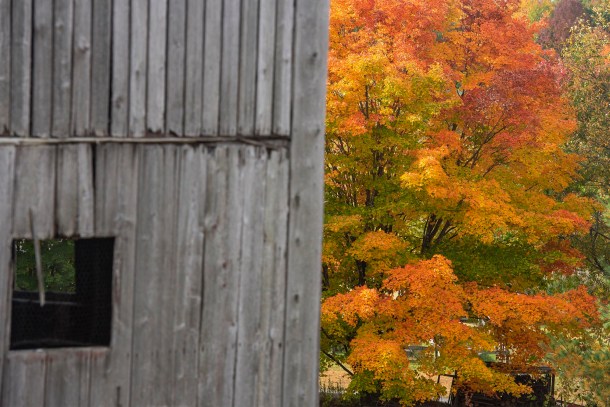
This month, Michael Snyder, commissioner of Vermont Forests, Parks and Recreation, is keeping a close eye on the weather.
With most of Vermont being categorized by U.S. Drought Monitor as abnormally dry — and much of southern Vermont even drier — what happens in the next several weeks is likely to determine how impressive this year’s foliage will be.
Snyder is hoping for one of two scenarios: If the hot weather continues into fall, he expects leaves’ colors to change gradually and develop into a fall palette slowly.
Even better, he said, would be if Vermont experiences cold nights and bright sunny days with some showers. In that case, Snyder predicts in late September the woods will emerge in especially bright colors — “sort of freakish colors that you shouldn’t see in nature,” he said.
But if the abnormally dry parts of Vermont worsen into extreme drought, the much-anticipated shift from greens to reds, yellows and oranges will accelerate. Leaves will turn brown more quickly — the worst-case scenario.
The impact is more than aesthetic. The fall season in Vermont is a booming tourist industry, bringing over a million visitors and about $300 million in visitor spending during fall foliage, according to Heather Pelham, the commissioner of Vermont Department of Tourism and Marketing.
Given the weather so far this year, much of the state could hit the fall color Goldilocks zone: just right.
That’s because some of the additional pigments created as trees prepare for the colder months, such as the red color in leaves, are actually protective compounds, said Joshua Halman, the forest health program manager at the Vermont Department of Forests, Parks & Recreation. Production is stimulated in times of stress, which includes the colder weather that is part of seasonal change.
If dry conditions are minimal enough, causing just enough additional stress to the tree, the dryness can amplify the production of these protective compounds, making this year’s leaves pop with even more color.
In southern Vermont, which is currently categorized as moderately or severely dry, Halman said he expects there to be more muted leaves that drop earlier in the season. However, he said that there is a chance for that to improve with more wet weather.
Another component that could impact fall foliage this year is the spongy moth caterpillar which has been most active in the Champlain Valley and sections of the Connecticut River Valley, according to Halman. Earlier in the season, tree foliage was removed by the moth larvae, causing additional stress to the trees.
“In some areas of the state — the west side of the state particularly where there's been a couple of years in a row of heavy spongy moth defoliation — I think we can expect some trees to not have good colors and some trees to have muted colors,” Snyder said.
However, foliage is regrowing, but leaves are currently smaller and less of a vibrant green than healthier trees.
“(Trees) are not great at compounding stresses, so when you have one and then another and another, repeated year after year, that's when trees start to give up,” Snyder said.
